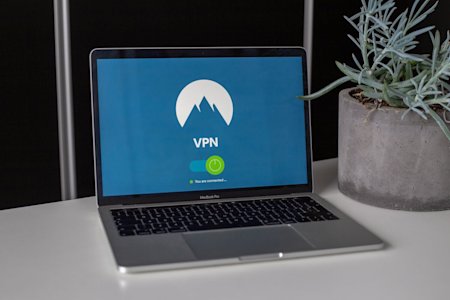Since the creation of the World Wide Web in the 1980s, individuals have been sharing new information with other people through the Internet. Not all of that information or data is created with good intentions—some of it can damage your devices and impact the security of the information located on your computer.
Many web surfers use a common tool known as a VPN to access information, such as networks and applications, remotely.
What is a VPN?
A virtual private network (VPN) is a tool that allows internet users to encrypt and reroute their traffic before connecting to another website, network, or service. This can help bypass certain geographic restrictions, shield public wi-fi activity from viewing your history, and hiding your IP address.
VPNs are also used as a way to access a specific network while traveling. Many companies will use a VPN to enable remote work so employees can still work on a secure network while they travel on-the-go.
The Security Risks of a VPN
While VPNs are helpful and help to create more flexibility for workers to work from anywhere, they’re not the most secure solution. Here are a few vulnerabilities that VPNs have when used for access working remotely.
VPNs Can’t Enforce Authentication Policies
One of the major drawbacks of a VPN is how quickly someone can gain access if they’re able to receive the credentials to one user’s VPN. If an individual wants access to your company’s entire network, all a criminal would need to do to gain access is to receive the credentials of one employee�’s VPN.
Cybercriminals are increasingly targeting teams that use VPNs. Cybercriminals use VPN bugs to infiltrate a network, or target team members for their VPN credentials through phishing attempts.
VPNs Connect From Any Device—Even If That Device is Corrupted
If you’re looking to connect to a specific network, you can connect from any device—which means you can connect from a potentially vulnerable device. When connecting to another network via a VPN, your data transfers back and forth between the two devices, which means data leaks and potential viruses can still cross over, even through a VPN.
VPNs are All or Nothing Systems
There’s no “some access” available with VPNs—you either have access to a network, or you don’t. This makes provisioning access for some people over others challenging. Say, for example, you would like a third-party contractor to work on your network, but only one part of it. Providing access to a third-party individual via a VPN would mean granting that individual access to your entire network.
VPN Maintenance Can Be Challenging
Not all VPN tools provide administrative abilities for an IT team to help manage the software on hundreds of devices. If your team does decide to use a VPN for access to your network, they have to manually update each device individually which can be cumbersome and difficult.
This also introduces an added layer of risk to the process—if installation of the VPN goes awry on just one device, that can cause an added vulnerability to your company’s network.
How to Combat VPN Security Risks
If your team uses VPNs, here are a few strategies you can adopt to protect against the security vulnerabilities of VPNs.
Adopt a Zero-Trust Security Framework
A zero-trust security framework is a security methodology that assumes that every single user is a threat. Individuals are required to go through multiple levels of verification to access one specific area of data.
This can be used in combination with VPNs to strengthen the general infrastructure of your security, but this doesn’t minimize the existing problems that VPNs already have. Instead, it adds a layer of security over the VPN, but if the individual gets through the VPN, the problems will persist.
Layer Additional Security Features Onto a VPN
You can add additional layers of security over VPNs vulnerabilities, such as adopting anti-virus software, multi-factor authentication, and device authentication support. However, this adds additional work to your IT leaders and requires continual maintenance and can be expensive for each single tool. Managing these multiple tools and keeping them working together can be difficult and time consuming for IT teams.
Finding tools that cover every single vulnerability of VPNs requires a lot of work and experience, so this solution isn’t necessarily scalable for smaller teams.
Why These Strategies Still Can’t Cover VPN Vulnerabilities
Implementing a zero-trust policy and adding anti-virus software is helpful, but it doesn’t solve the inherent problem—these are solutions that cover the vulnerabilities of VPNs. Think of these solutions as bandages on a wound. They are solutions that can help prevent bad things from getting into a wound, but it would help if the wound was healed all together.
Instead of finding additional tools to combat the vulnerabilities of a VPN, instead look towards solutions that simply don’t have those problems. If you’re looking for ways for your employees to still access your network remotely, consider looking at remote access software instead.
Use Remote Access Software Instead of a VPN
Bypass using VPNs completely and use remote access software for remote work instead. Remote access software works a little differently than a VPN—instead of connecting directly to a server, a local computer is used as a controller for a remote computer. This makes remote access software and RDPs strong alternatives to VPNs. Remote access software ensures that all data and information stay within your network and on that remote device.
Employees working remotely will be able to control their office workstations remotely as if they were sitting in front of the computer. They’ll have access to all the files and applications on that remote computer, ensuring they can work effectively while on-the-go and eliminating the security vulnerabilities of VPNs.
Remote access software also provides your IT team with more control and management over a fleet of devices. They can control which users and devices have access to what company computers. They’re also able to use the remote access software to help workers solve problems on a user’s device in just a few clicks.
Try Splashtop Enterprise for More Secure Remote Access
If you’re looking for a way for your teams to work remotely while still maintaining a certain level of security, Splashtop Enterprise is a good alternative over using a VPN to access a remote network.
With Splashtop Enterprise, your team can maintain control of how your employees access your organization’s computing resources and ensure that important, confidential data stays where it needs to be. Interested in learning more? Chat with one of our sales representatives today to get started.





